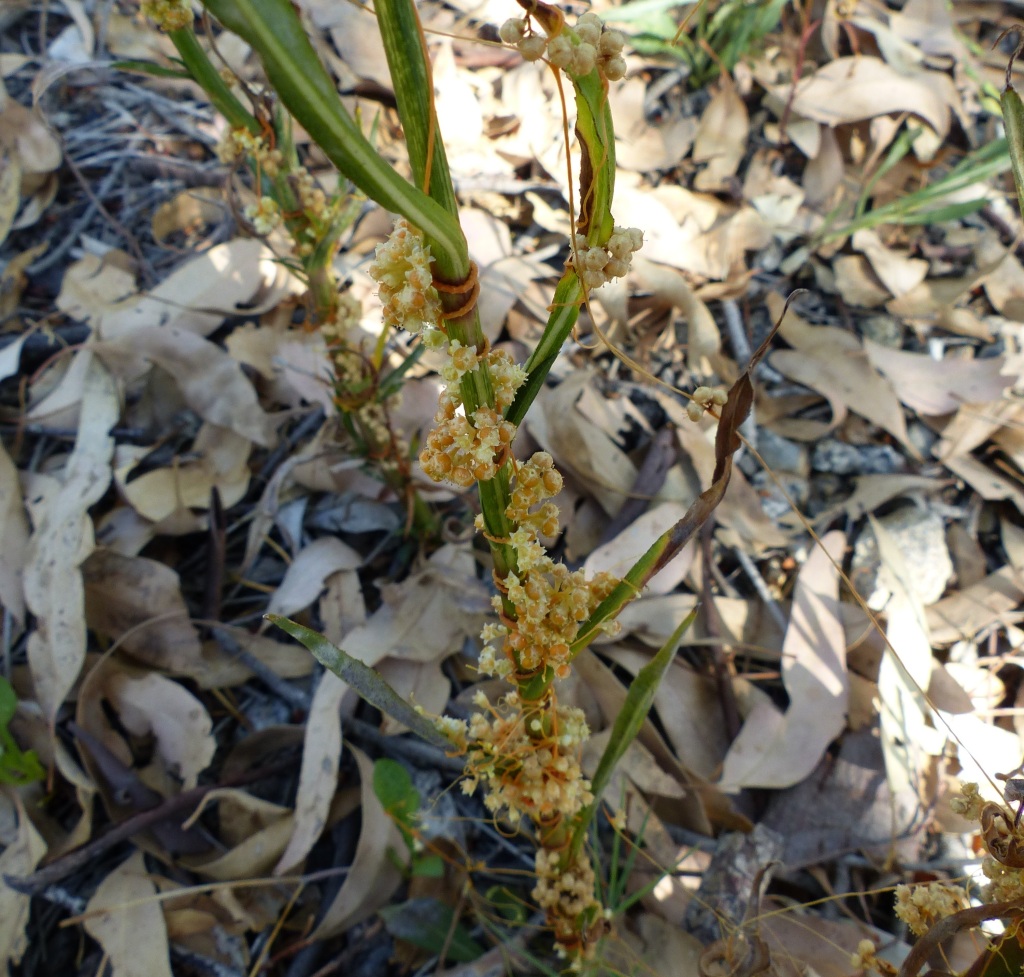Cuscuta campestris
Yunck. Field DodderStems yellowish. Inflorescence a compact axillary cluster to c. 15 mm diam., subtended by an obtuse bract 1.5–2 mm long. Flowers 5- or rarely 4-merous; pedicels 1–2 mm long; calyx 1.5–1.8 mm long, lobes unequal, ovate to oblong-ovate, obtuse to subacute, much longer than the tube; corolla 2–3 mm long, white or cream, lobes triangular, more or less acute, inflexed at apex, equal to or longer than the tube; filaments 0.8–1.5 mm long, longer than anthers; scales subtending stamens oblong, longer than corolla-tube, with a dense fringe to c. 0.5 mm long; stigmas capitate. Capsule depressed-globose, 2.5–3.5 mm diam., not circumscissile; seeds 1–1.5 mm long. Flowers mainly summer.
MuM, Wim, VRiv, MSB, RobP, MuF, GipP, CVU, HSF. Also naturalised SA, Qld, NSW, widely throughout the world. Native to America. Native to America and widely naturalised. In Victoria currently known mainly from along the Murray River between Albury and Mildura, and also several localities to the east of Melbourne (e.g. Healesville, Moe), and at Horsham, but apparently spreading rapidly and potentially a very serious weed. Parasitic on a variety of different families. In Victoria it has been collected from native and introduced species of Asteraceae (e.g. Senecio cunninghamii, Sonchus asper, Symphyotrichum subulatum), Fabaceae (Medicago sativa), Lamiaceae (Marrubium vulgare), Polygonaceae (Persicaria spp.) and Menyanthaceae (Ornduffia reniformis).
Jeanes, J.A. (1999). Cuscutaceae. In: Walsh, N.G.; Entwisle, T.J., Flora of Victoria Vol. 4, Cornaceae to Asteraceae, pp. 375–379. Inkata Press, Melbourne.
 Spinning
Spinning



